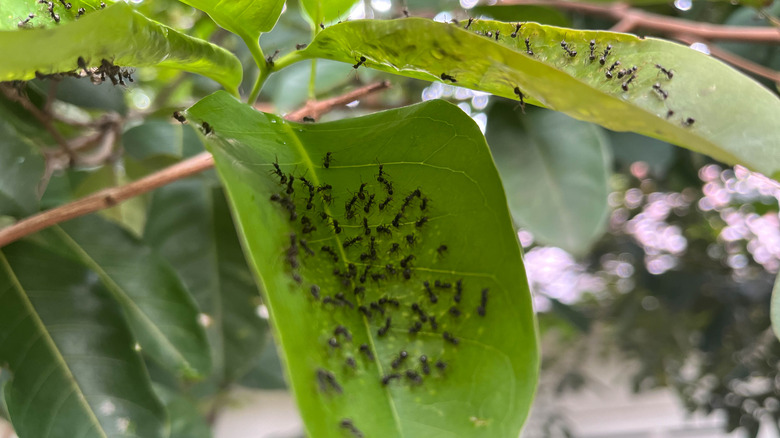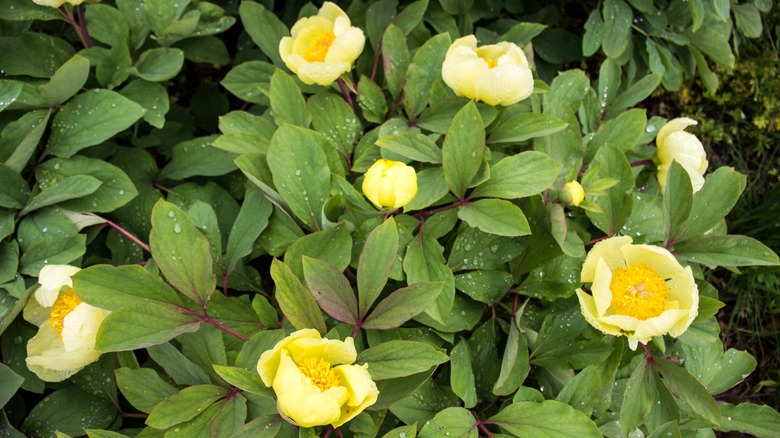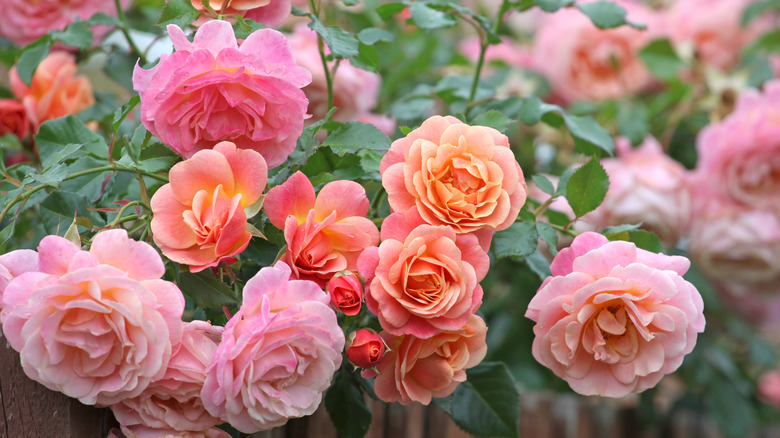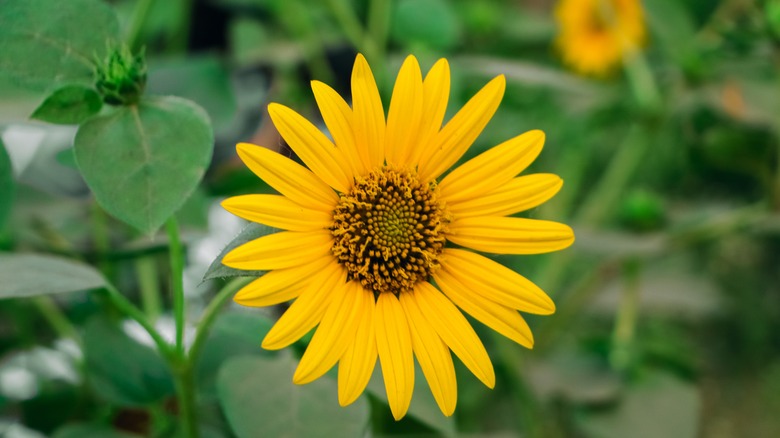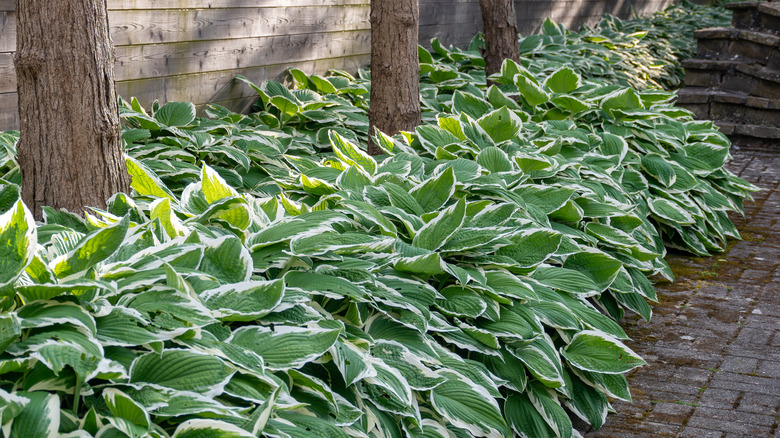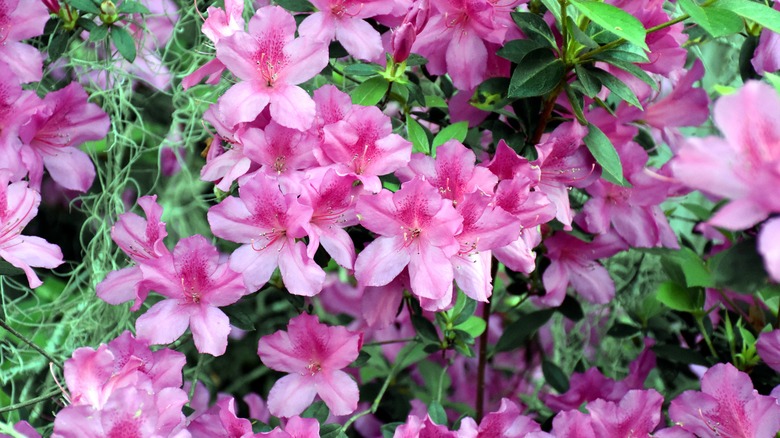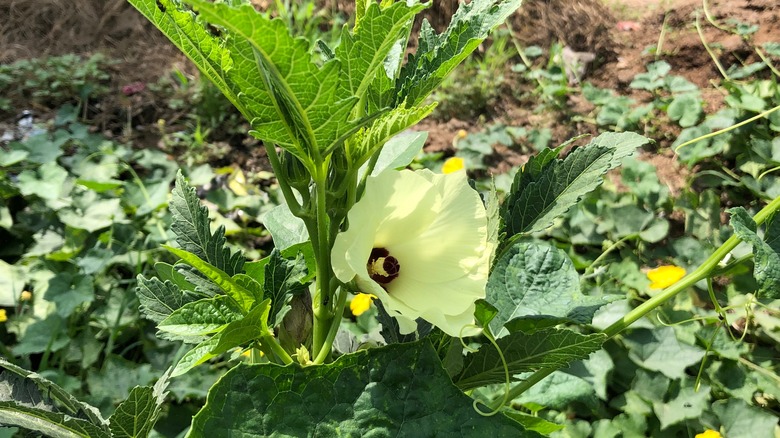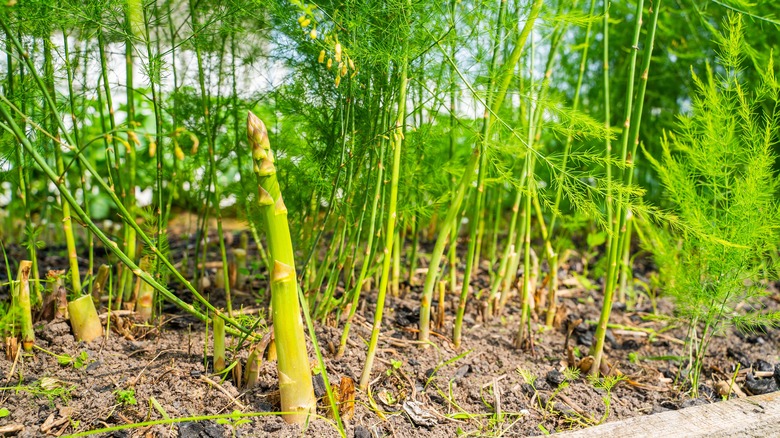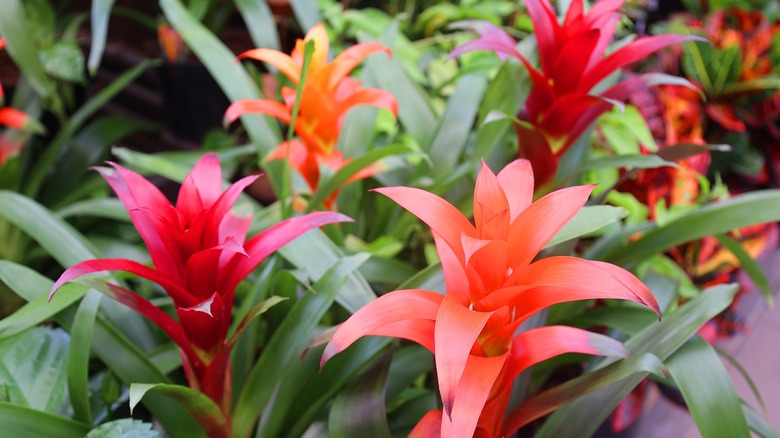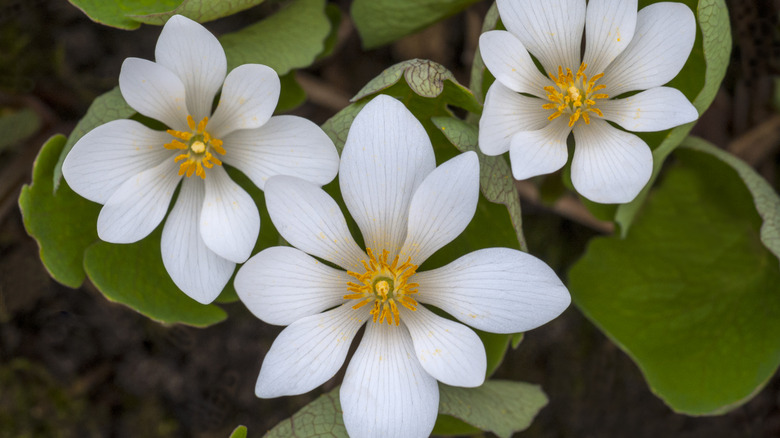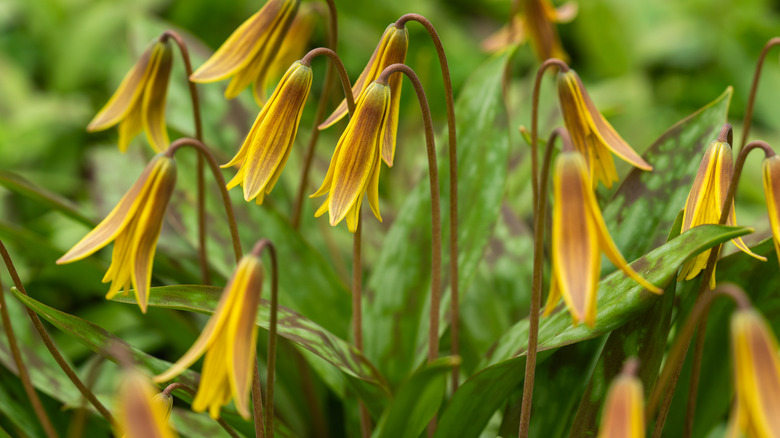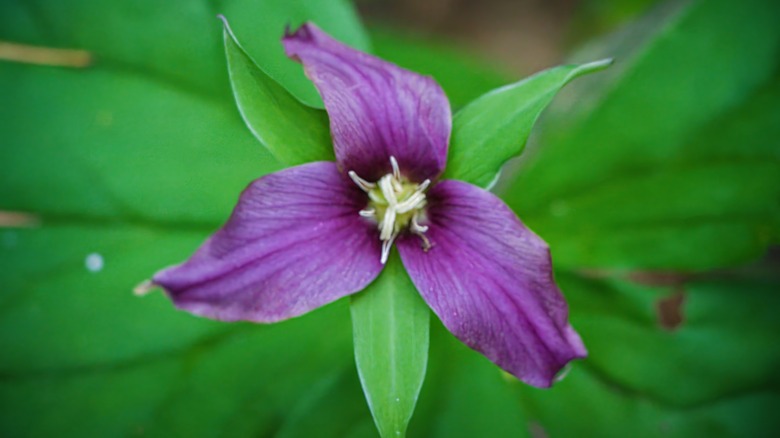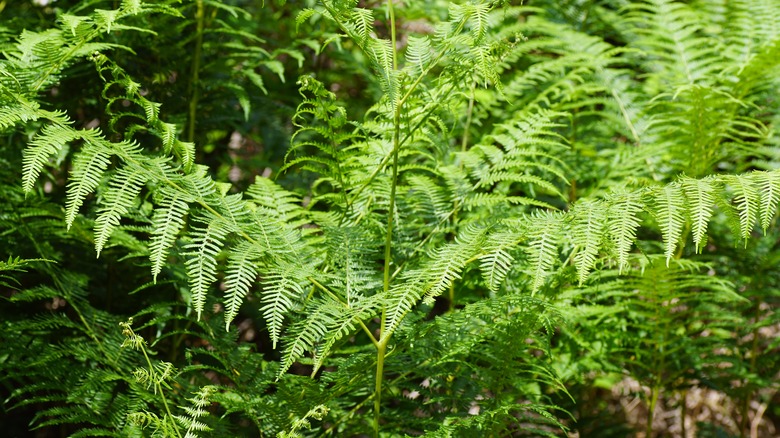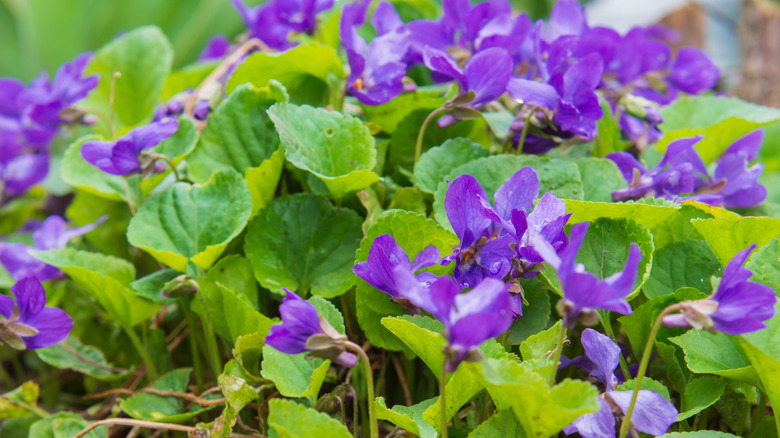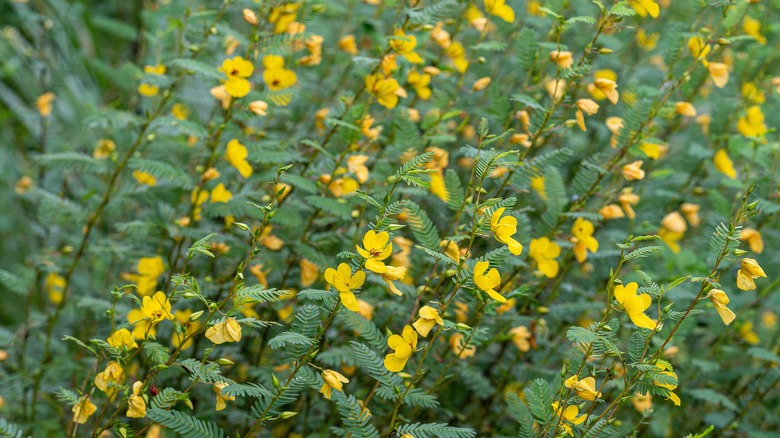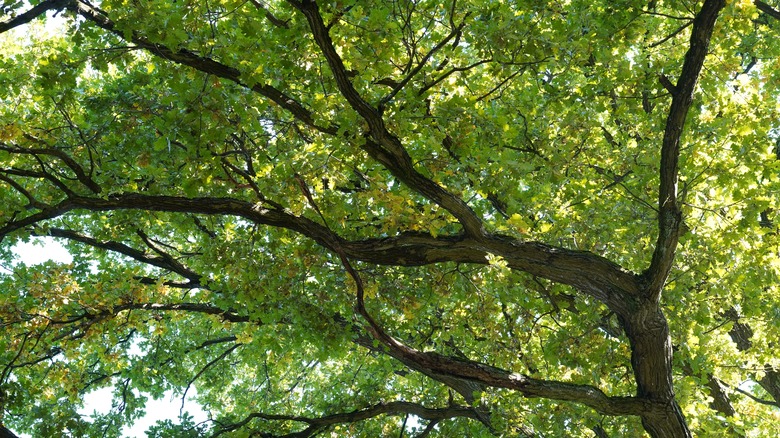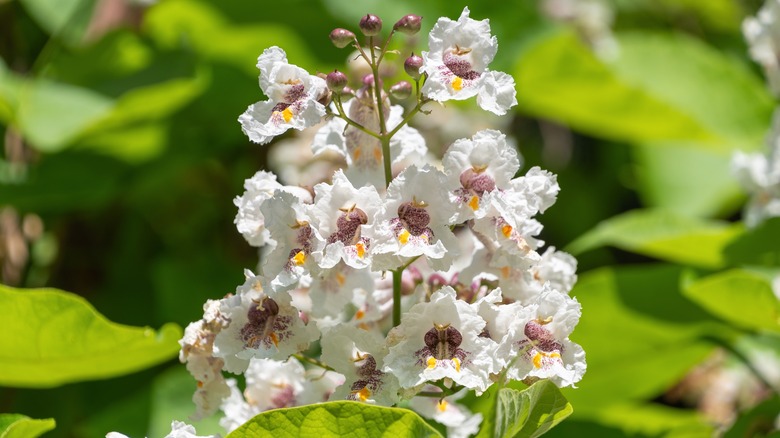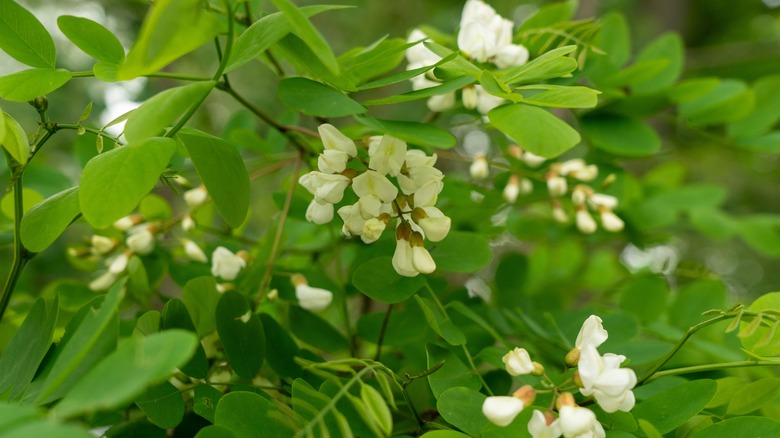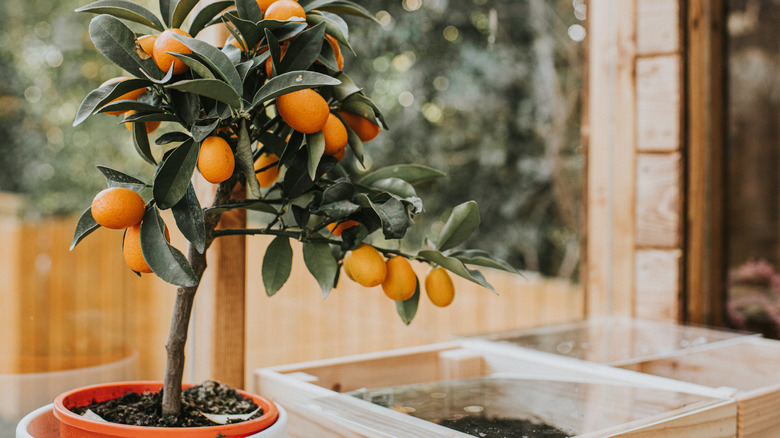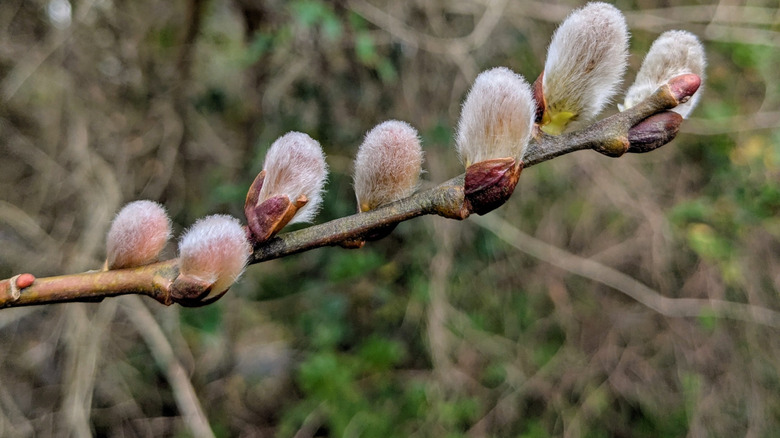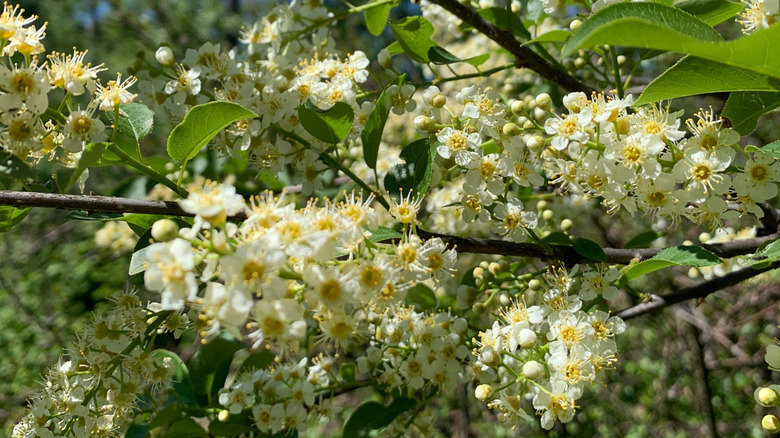Your Garden Might Be An Ant Paradise—Thanks To These 22 Plants
We may receive a commission on purchases made from links.
While you're out there gazing at the ornamental flowers you so lovingly planted some time ago, ants may be hatching plans to build their hills and make your garden their forever home. This can work out great, as ants can aerate the soil, improve drainage, and eliminate weeds or harmful pests while tunneling through it. Plus, if you grow wildflowers that depend on ants for pollination — think violets, bloodroot, trout lilies — you can rest assured of beautiful flowers.
But here's where things get complicated. Ants also release anti-bacterial toxins that degrade pollen quality for small plants, making their presence unwelcome. If their nests lie close to your prized ornamentals, they may make meals of their roots or block irrigation sprinklers. As opposed to working as the good guys, they may worsen pest outbreaks in your garden. Since they enjoy the honeydew secreted by aphids, caterpillars, and their ilk, they're tempted to defend them to keep their colonies thriving.
In short, the reason ants are harboring in your garden is the ready availability of food — or nectar. They may get this directly from the nectaries of plants and trees, such as peonies, roses, sunflowers, okra, and sweet peas, to name a few. Or, by farming the sweet secretions of dew-producing critters attracted to your garden's flowers, such as roses. Also, they can be both friend or foe, depending on your plantings. Should you find their takeover hugely problematic, consider removing the ant-friendly plants mentioned below.
Peonies
When peonies (Paeonia spp.) are adorned with lovely pink buds, you might catch a swarm of ants happily crawling over them. They're basically on the hunt for the sweet nectar being secreted out by the nectaries present on the sepals (leaves surrounding their buds). Ants behave as good bugs in this case because they eliminate other nectar-seeking pests that may ultimately damage and weaken your plants. That being said, if you plan on snipping these flowers for indoor arrangements, deploy the best ways to remove ants from your cut peonies to avoid unpleasant experiences.
Roses
In the off chance you've overfertilized your roses (Rosa spp.) — bush or climbers — they may become susceptible to aphids. This, in turn, may draw the attention of ants who would like to consume the dew that aphids secrete on any tender new growth. Look for mold on your roses to be sure. If your yard has a thriving presence of ladybugs, this problem should sort itself out, though you may supplement by spraying water down the roses. This should get rid of aphids, and by extension, the ants. Otherwise, place boric acid baits to resolve ant infestation directly.
Sunflowers
Love sunflowers (Helianthus spp.) as they lazily pop their big heads up, all shiny in the summer sun? Turns out, this stunning yellow flower might be attracting ants to your home and garden. Sunflowers are no strangers to the antics of aphids, treehoppers, and other sap-sucking insects. Since they all exude honeydew that ants like, these six-legged insects congregate on your flowers for an easy meal. The worst part, though? They'll even help move the aphid eggs to other flowers, so this mutualistic relationship can continue till death do them part. Deal with ants and aphids as you would for roses.
Hosta
Hostas may also fall prey to the mandibles of ants owing to their active stewardship of aphids. Several peach, red, or black-bodied aphids can attach themselves to the leafy bottoms of these shade-loving perennials during the growing season. Ants are attracted to the sugary substances' aphids fail to digest — you'll often notice the leaves coated in a sticky liquid. Due to the easy food supply, ants actively defend these pests and may even transport them to other plants, worsening the overall damage. Hose the aphids down or spray neem oil, like Zuprime's Nani's Pure Neem Oil for Plants Concentrate.
Azalea
Mature specimens — especially those with old, wounded, and rotting wood — of azaleas and rhododendrons can be utilized by ants as nesting habitats. Carpenter ants, in particular, harbor inside the damp heartwood or monopolize the root zone of such woody plants. While these ants pose no damage to your plants, they may become problematic if azaleas are planted too close to your foundation, enabling their access indoors. In the western U.S., omnivorous ants are more common and actually protect the shrubs from caterpillar damage.
Penstemon
Ants love to visit low-growing plants whose blooms open up in close proximity to the main stem, and a few penstemon or beardtongue varieties fit that bill. Apart from that, some ants also feed on the seeds produced by Penstemon schmidel, which is a popular deer-tolerant, pollinator-friendly planting choice. In case your garden is afflicted with aphids that, when left uncontrolled, move on to your penstemon plants, you may similarly find numerous ants gathering on the flowers.
Okra
There are many reasons ants could be all over your okra plants. If the concerned variety produces pearl bodies underneath its leaves, it may be encouraging ants to visit so they may, in exchange for nectar, defend it against sap-sucking pests. Another reason is that ants may be reaching for the nectar oozing from the flowers. Or, in case your plants are afflicted by aphids, ants may be actively farming them for honeydew. Usually, ants aren't a problem for okra. But if you locate fire ants, you'll want to remove them as they can prevent harvest and impair flower quality.
Asparagus
If you aren't too careful, the ferns on your asparagus vegetable may become infested with ants. This is to do with the presence of asparagus aphids, which are tiny, green or gray-bodied insects that collect on the leafy undersides, often blending into the surroundings. When they excrete the excess sugars, ants become interested in visiting the area and farming these aphids for more honeydew. To protect your crop and deal with ants, snip off the infected leaves and destroy the aphids.
Bromeliads
In a sense, bromeliads function as a nesting site for ants, offering them a harbor in their leaves or roots (depending on the species). After the worker ants are done foraging, they bring the collected food to the bromeliads, kickstarting a symbiotic relationship. Although bromeliads are equipped to gain nutrients and water from the ambient air or the debris collecting in their base, they also benefit from the additional supplies the ants bring back. The greater nutrient availability allows these plants to grow faster.
Bloodroot
Growing bloodroot (Sanguinaria canadensis) in your herb or medicinal garden may also bring in ants. That's because bloodroot develops elaiosomes, which are protein-rich appendages on its seeds. To benefit from this nutritional profile, ants consume these fleshy segments, discarding the rest of the hard seed and dispersing it in new areas. This helps bloodroot, which is a wildflower native to the central and eastern U.S., to naturalize itself and preserve its legacy. If you mind the ants or bloodroot's low-growing colonizing, best keep them for woodland or rock garden settings.
Trout lily
If you keep a pollinator garden, odds are you've planted trout lily (Erythronium americanum). As a spring ephemeral, it serves emergent pollinators, especially Andrena miner bees, when everything else is dormant. Unfortunately, these plants are difficult to grow from seeds (pushing gardeners into planting them as bulbs), though ants can help with that. Like bloodroot, trout lilies have elaiosomes on their seeds, which encourage ants to take them to their colonies, ensuring the seeds remain moist while going through the two minimum hot-cold cycles necessary to break their double dormancy. Put simply, ants ensure you'll have new plants without requiring additional effort.
Trillium
On becoming mature, trillium can turn your garden into an ant paradise for their survival. These long-lived herbaceous perennials rely on ants to disperse their seeds to newer areas where they will face less competition from the original or sibling plant. Moreover, as they require tricky conditions (like trout lily) to break dormancy, ants can help with that as they consume the lipid-rich elaiosomes and discard the seed in their debris pile within the colony, where it germinates in a couple of years. You may want to leave them be, as bumblebees and solitary bees find these flowering patches irresistible.
Bracken fern
Bracken ferns (Pteridium aquilinum) have a curious relationship with ants, literally using them as bodyguards to minimize insect herbivory. In a typical scenario, usually in spring or summer when the ferns are putting out new growth, ants collect around the base of their fronds, which carry sugar-rich extrafloral nectaries (EFN). A 2012 study published in Arthropod-Plant Interactions found that, when present on the fronds, ants eliminated sawfly eggs in great numbers, although their impact wasn't as pronounced for larvae. Even grazers avoid nibbling on their emergent fronds, though the effect fizzles after they mature.
Violets
Ever wondered why violets (Viola spp.) quickly take over your garden? Turns out, apart from their rhizomes, they also produce fertile seeds that ants are more than happy to move around in the soil. That's because when their fruit capsules break apart, they release seeds affixed with elaiosomes, which mimic proteins present in dead insects. Ants move the seeds to a different area that's still hospitable, yet minimizes resource competition and prevents seed eaters from consuming them. If ants in your yard have gotten out of hand, ensure plenty of flickers are eyeing them for meals.
Milkweed
Most native milkweed species have to contend with the ant problem. Besides their flowery nectar, ants farm around and tend to aphids, who excrete honeydew. Curiously, some milkweed species have developed mechanisms where they make their sap poisonous, which, rather than destroying aphids, harms their saviors — ants — instead. This allows ladybugs to take over and sort out aphid infestations. That being said, if your milkweed is being crawled on by large ants, like thatch ants, take steps to get rid of them, or they'll remove pollen and adversely affect fertilization and growth.
Partridge pea
Partridge pea (Chamaecrista fasticulata), the nitrogen-fixing, pollinator-friendly herbaceous annual native to the central and eastern U.S., deliberately sends attractive signals to ants. Extrafloral nectaries are located at their leafy base, not too far from the main stem. These ooze sweet nectar throughout the flowering season when foliage-eating insects are similarly active. When ants crawl in for the nectar, they also eliminate the bad bugs and their eggs. This improves plant growth and vigor. However, as partridge pea is an assertive spreader and can creep into other beds, this may amplify the presence of ants to unwarranted numbers.
Oak trees
In a convoluted relationship, oak trees can indirectly attract ants into your garden. You may know that gall wasps seek oaks for egg-laying and emit chemicals to stimulate the growth of galls around their larvae for protection. As these galls have an edible, pink cap that's chock-full of fatty acids, ants are enticed into taking them into their colonies. Since the larvae-containing segment is inedible, it remains in their nests, well protected from gall eaters, allowing them to successfully transform into wasps.
Catalpa
Catalpa — both C. speciosa and C. bignonioides — host the catalpa sphinx moth's offspring, which eat away their leaves whole, defoliating the tree. To circumvent this issue, catalpas utilize ants for defense by secreting sweet juices from their extrafloral nectaries in the leaves. This production shoots up when the larvae are close to hatching, as well as when they start causing extensive damage to the foliage. This brings in bodyguard ants in greater numbers, who destroy the young sphinx moths in exchange for food. The adults are spared, though they're harassed. Unless these ants are invading your home, leave them to their devices.
Acacia
Over time, acacia trees have established a special relationship with ants. For starters, they produce sweet juices in their nectaries that contain enzymes that prevent the ants from consuming other forms of sucrose. In short, the ants become dependent on their sap for survival. Acacias further sweeten the deal by providing a habitat of hollow thorns to host ant colonies. Eventually, trees also grow nutrient-rich glands called Beltian bodies, which are concentrated around the leafy tips. Ants, in turn, shield the tree from its most precarious pests. Note that some acacia varieties are invasive and are best removed from your property.
Citrus trees
Argentine, fire, and gray ants are commonly found around citrus trees, especially in California. They can be problematic as they defend the Asian citrus psyllid from its natural enemies. The Asian citrus psyllid causes the fatal citrus greening disease, under which the fruit grows misshapen and deformed, eventually killing the tree. Ants also protect scales, mealybugs, and whiteflies that produce sweet juices, stressing the citrus trees. Fire ants are especially harmful as they feed on bark tissue and flowers, resulting in poor-quality fruit or the death of young specimens. Consider applying sticky barriers, like Catchmaster Tree Banding Insect Barrier, to block ant access.
Pussy willow
When pussy willows (Salix discolor) develop their downy catkins around early spring, they become the go-to targets for some ant species on the lookout for nectar and pollen. If not for the former, ants may visit these trees in case they're hosting small willow aphids for their dew. Any diseased, decaying, hollowed, or rotted wood may become home to carpenter ants. As ants help finish off willow borers, responsible for the untimely deaths of these trees, they aren't always harmful. However, it's best to sort out the aphid problem if you see one and make sure your tree isn't diseased.
Chokecherry
Besides turning your garden into a pollinator heaven by attracting lots of native bees, chokecherry (Prunus virginiana) can also turn it into an ant paradise. These shrubs or trees develop extra floral nectaries to attract ants, so they may, in turn, protect them against pests. Ants also feed on nectar spilling out of their early spring blooms. Chokecherries also seem to attract many aphids, which may keep ants busy throughout the summer. If your backyard birds are being tardy about picking aphids off, spray them down with water. This should also taper the plant's attractiveness to ants.
